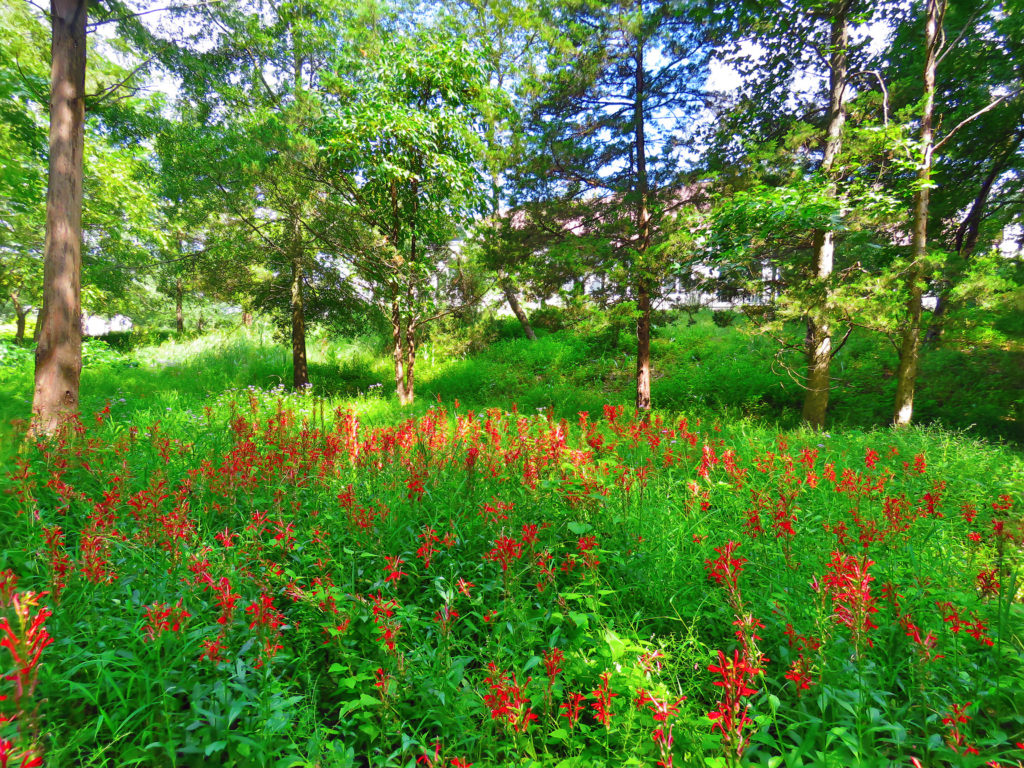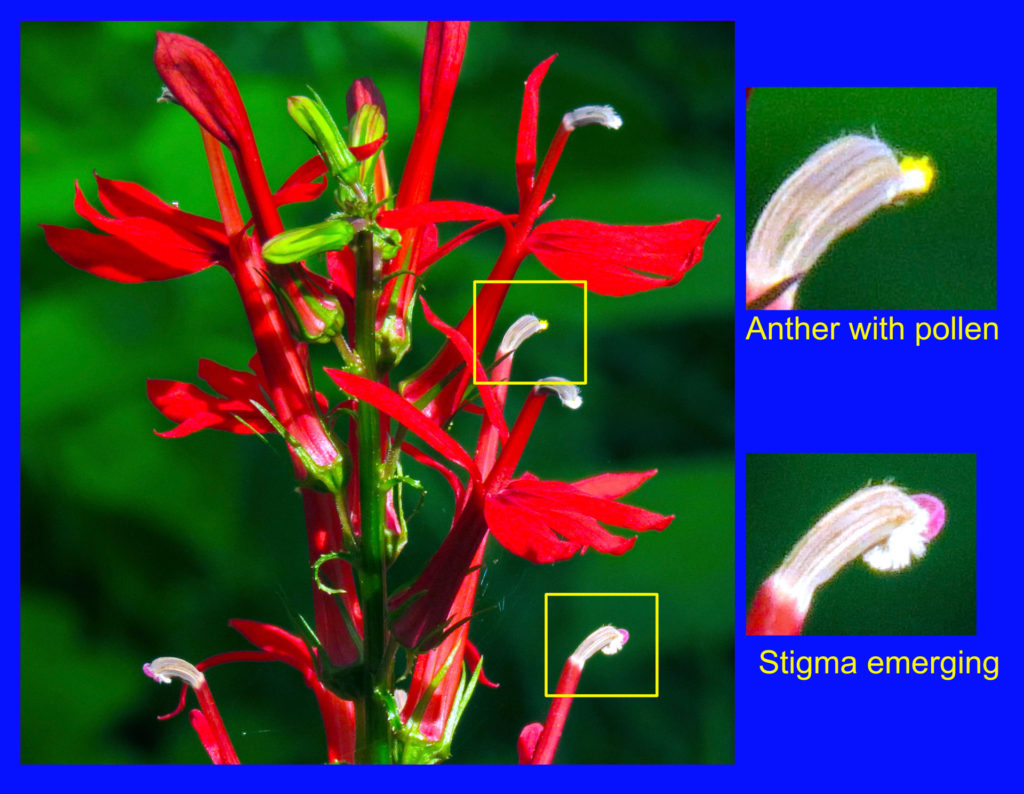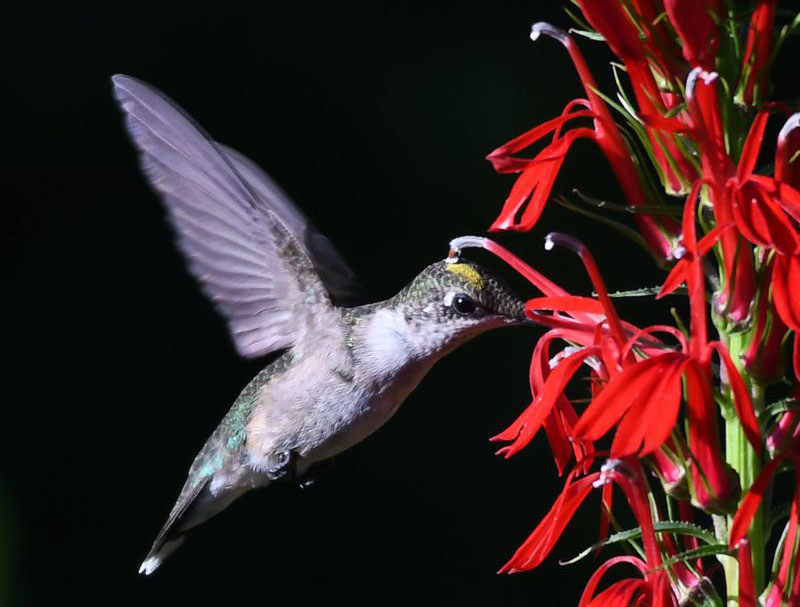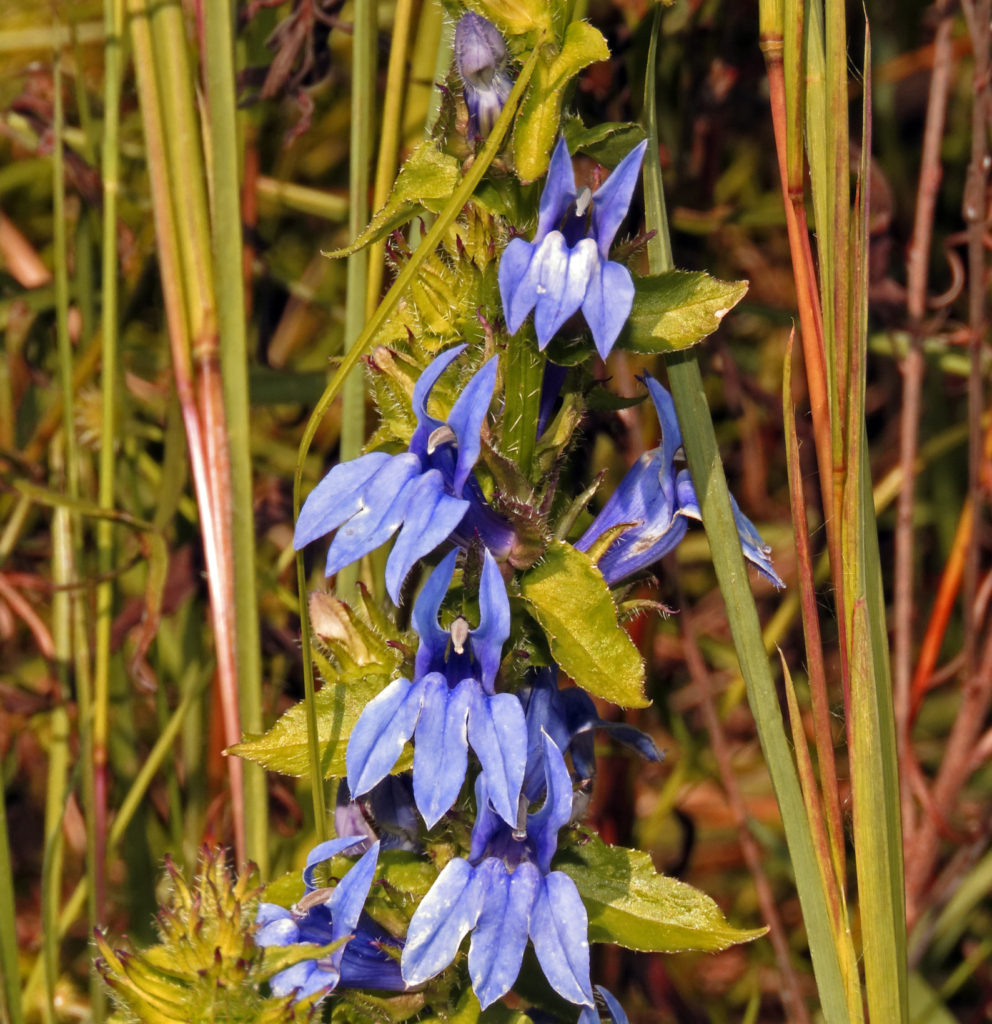A search through the rich archive of Around the Leas revealed only one item that cited the deep red Cardinal flower. It was a flower guide, its borrowed image missing, stating that they were rare in Medford Leas and found along river banks.
That had been my experience as well; I would find them in isolation along the bank of Sharp’s Run on Y13, where their requirement for always-damp soil could be met. That made it all the more surprising to see in September, in the undergrowth of the rain catchment across the street from us, a swath of red flowers that turned out on inspection to be Cardinal flowers. There is no established explanation for their appearance there, for the first time and in such abundance.
Researching the flower revealed the surprising fact that it was dependent on the Ruby-throated Hummingbird as its exclusive pollinator!
Who knew? Not even our local birders.
Here is the predicament faced by this flower:
A single tube formed by fused stamens has at its tip the so-called white lip characteristic of the Lobelia family to which the Cardinal flower belongs. In the upper blossoms on the spike, the lip bears anthers with pollen, while lower on the spike, and as the flower matures, the same lip bears an emergent stigma.
Witness now the perfect geometry of the Ruby-throat and the Cardinal flower in this instructive photo .. adapted, with permission, from a recent publication of the Norfolk Botanical Garden.
The Ruby-throat reaches with its long bill the nectaries deep within the tube formed by the three petals, and her pate is blessed with pollen! When the pollen-crowned bird visits older blossoms, their stigmas are perfectly positioned to be fertilized.
This example is representative of but one of many instances in the Western Hemisphere where hummingbirds of different species act as pollinators. They are, moreover, the only bird species that can metabolize sucrose, the principal nourishment in nectar to hummingbirds and bees alike. Both split sucrose into glucose and fructose; the bees convert the latter to honey.
Mutualism
In the co-evolution of pairs of disparate life-forms we may encounter at one end parasitism and symbiosis and at the other extreme, predator and prey. In this case however we have an example of mutualism, where both members of a pair of free living species benefit from their interaction. A pas-de-deux occurs most often between the flowering plants and pollinating insects, and is of recent evolutionary origin. The diversity of flowering plants and trees we see today began only during the 66 million years of our present Cenozoic Era following the great extinction event ending the age of dinosaurs and the savannas of ferns and cycads they roamed.
A Duet of Lobelias
A few days later, on the edge of the Bridlington North Meadow, right next to the curbside turf, a small cluster of Cardinal Flowers appeared in bright sunshine and next to it, her botanical neighbor, the Blue Lobelia (also called the Blue Cardinal Flower.) The Blue Lobelia has hitherto not been described in these pages. Unlike its Red cousin, the Blue is pollinated by bees.
It was a good year for Lobelias.
Fred Kahan





